
Creative strategy once meant clever campaigns and a few viral ideas. Today, that formula falls flat. Markets are moving too fast, and audience attention spans are dwindling. If you use the same old creative strategy creation techniques, your ideas won’t land.
Modern brands are taking a different approach. They’re treating creativity as a living system, deeply connected to behavior. These brands rely on insights drawn from culture and data, not trends that fade by next quarter.
What’s the outcome? Communication that actually works. If your creative strategy feels stalled, it’s probably running on an old engine. Let’s look at what’s going wrong and how you can fix it by following the examples of brands that are absolutely nailing it.
You might think your creative plans are failing because your team lacks ideas. But that's not always the case. Many plans fail because the system around those ideas is broken.
The problem usually hides in the habits and old frameworks that you may be relying on. Let’s look at patterns that pull your creative strategy off course.
In too many companies, creativity lives in a single room. It’s often called the creative team.
But that’s not the right way to do things. When marketing, product, and strategy teams don’t sit at the same table, the creative direction ends up serving fragments of the business instead of the whole vision.
Suppose you created a stunning rebrand that was applauded by everyone in the creative department. But operations didn’t get a say in it. Now, customers are confused because operations didn’t update the experience to match this new look.
Creativity has to be a shared mindset for it to be effective. If your designers and strategists aren’t in the same Slack thread, you’re already behind.
Scroll through any social media platform and you’ll see brands copying the same meme format, the same video cuts, the same ‘’relatable’’ tone. For them, the goal is being seen, not remembered.
But trends only give you temporary engagement spikes. What you need is loyalty.
A coffee brand posting starter pack memes about caffeine lovers may get a few laughing emoji reactions, but that’s it. It won’t make customers switch brands.
Now, compare that to how Liquid Death built its audience. It created a tone so distinct that it shaped culture instead of reacting to it.
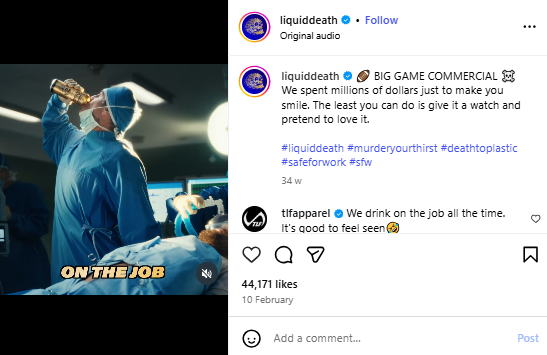
Many teams collect data like they’re stocking a warehouse, but never use it in the creative room. The analytics live in dashboards, and the ideas live in whiteboards. The two never meet. That’s how campaigns miss their mark.
Say your video ads are performing best on mobile at night, but your team keeps planning morning launches because that’s industry standard. This gap between insight and execution costs attention.
Brands often write stories that sound impressive in the boardroom. Ideas about ‘’our journey’’ and ‘’our innovation’’ are thrown around.
Audiences don’t care about that unless it connects to their reality. Does Patagonia talk about how great they are at making jackets? No, their focus is on showing their responsible approach.
How often do you see Duolingo talking about language courses in its social media content? The brand plays with pop culture so users feel like they’re a part of something bigger.
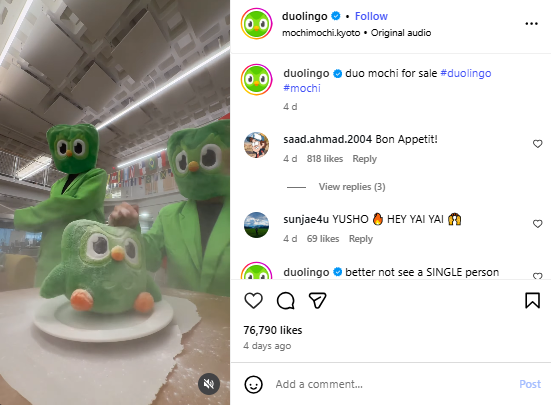
Messages that start with ‘’we’’ often tend to miss the mark. Modern storytelling begins with the audience’s challenges, not your company’s achievements.
Likes and impressions might look nice in a report, but they rarely prove impact. Many teams make the mistake of only measuring vanity metrics. As a result, they end up producing content that looks good instead of performing well.
For example, a car brand may celebrate a viral ad while showroom visits stay flat. A better measure would be test-drive bookings or repeat web traffic after exposure. Creativity earns its value when it’s tied to behavioral outcomes rather than mere applause.
When you look at today’s most impactful brands, their creative success doesn’t come from luck or massive budgets. They’ve learned to build systems around ideas, so that creativity is no longer a guessing game.
Here’s how they’re doing it, and what you can take from their playbook to make your own creative direction stronger.
Brands that are doing creative strategy right start with a clear problem to solve. That means before anyone sketches a logo or drafts a campaign brief, the team understands the specific challenge the creative work needs to address.
For example, Nike’s ‘’You Can’t Stop Us’’ campaign wasn’t a mere feel-good sports montage. It answered a moment of global fatigue during the pandemic and reminded people that sports and resilience don’t pause. The ad showed diversity and inclusion, which made viewers feel represented regardless of where they are from.
The takeaway from this campaign is that before you approve a creative idea, write just one line that finishes this sentence: ‘’This campaign exists to change how people ___.’’ If that blank can’t be filled simply, the idea isn’t ready yet.
The smartest creative teams use data like a compass rather than a ruler. It points them in the right direction but doesn’t restrict imagination. These brands combine behavioral insights with creative instincts to build strategies that connect emotionally and perform commercially.
Spotify is a good example here. Its annual ‘’Wrapped’’ campaign isn’t just a numbers game. It’s a personalized creative campaign that’s unique for every listener. Behind those colorful visuals are months of data analysis, yet the outcome feels human and deeply personal.
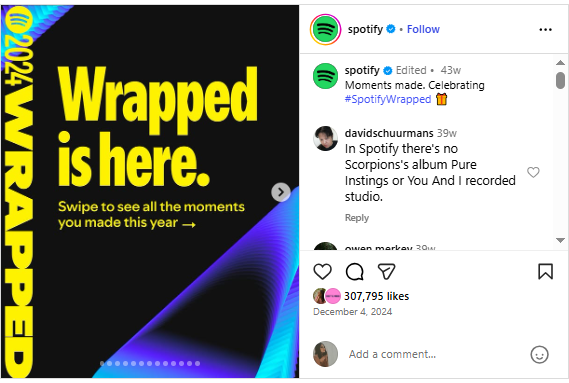
You need to create a shared dashboard for your creative and analytics teams so that everyone can see real-time engagement and sentiment data to adapt ideas according to consumer expectations. The numbers should be a part of your campaign planning from the beginning.
AI has changed creative work, but that doesn’t mean the best brands are using it to replace humans. They’re using AI to expand what’s possible. AI helps them find insights and scale production without a loss of creative intent.
L’Oréal’s example can be very inspiring in this regard. Shoppers often hesitate to buy skincare and makeup online because they can’t try products physically. The brand’s AI solutions, ModiFace and SkinConsult AI, allow users to upload selfies and get personalized recommendations.
What makes this approach powerful is how human it feels. It’s not just cold data points or content being pushed down the audience’s throats. Rather, they see themselves reflected in the results.
That’s why the virtual try-on tool was used over a billion times around the world. People who used it were three times more likely to make a purchase, and the AI skin diagnostic generated more than 20 million personalized analyses.
On a more creative side is Burger King’s AI use. Their Million Dollar Whopper Contest invited fans to create their dream Whopper using the app or a microsite. People could mix and match up to eight ingredients. Once submitted, AI turned each entry into a personalized burger image and a custom jingle.
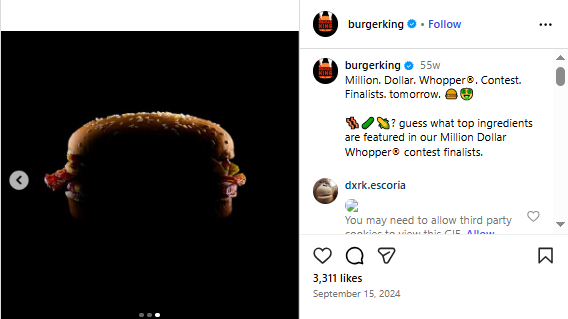
It was smart, silly, and entirely on-brand. Everyone got something unique, even if their burger didn’t win the grand prize. The three best entries were sold in stores for a limited run, and one winner walked away with a million dollars.
It’s pretty cool how the brand didn’t focus on showing off technology. Their emphasis was on deepening participation and getting people to talk about them. That’s exactly what you need to keep in mind when using AI for your creative strategy.
Older strategies used to start with the calendar: ‘’What’s our next campaign?’’ Modern brands start with culture: ‘’What’s happening in people’s lives right now?’’
Take how Wendy’s turned its X account into a cultural voice. It became a personality instead of running traditional ad campaigns. The brand joined conversations in real time, joked with followers, and built a reputation for humor that people actually wanted to engage with.
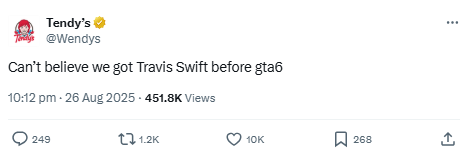
On a larger scale, brands like LEGO tap into cultural trends like sustainability and inclusivity. They do so by creating sets that reflect real communities and modern values. In doing so, they join what their audiences already care about.
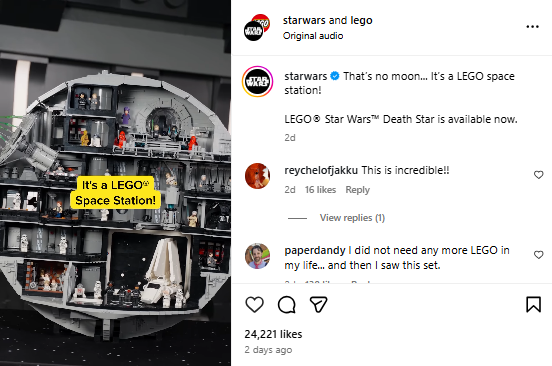
You can take inspiration from these brands by holding monthly ‘’culture sessions’’ where your creative and social teams map emerging conversations from TikTok, Reddit, and news feeds. Then ask: ‘’Where does our brand genuinely fit in?’’ That question prevents hollow trend-chasing and guides authentic participation.
Since video is now the core language of digital communication, it’s a must-have part of any creative strategy. But you can’t just shoot something beautiful and call it a day. At times, it’s important to work with a video marketing agency that understands your voice and can help you convey your message to the audience in the most relatable way.
These videos don’t necessarily have to be lengthy ones. A video production agency like INDIRAP can also create short-form TikTok Reels for your brand. They can then supplement it with long-form YouTube content. When needed, paid social videos can also be created to capitalize on your creative ideas.
When hiring a video production agency, share your brand’s ‘’creative non-negotiables’’ with them. These might include tone of voice, emotional triggers, or color language. The closer they understand your internal culture, the more authentic the work becomes.
.gif)
Rigid strategies die quickly in a world that moves by the minute. Modern brands plan for flexibility from day one. They create modular content that can be adjusted based on live feedback.
Netflix does this quite well. Their social campaigns constantly adapt to audience reactions. If fans meme a character, Netflix leans into it with fresh content the next day. Such flexibility keeps engagement high without overhauling entire campaigns.
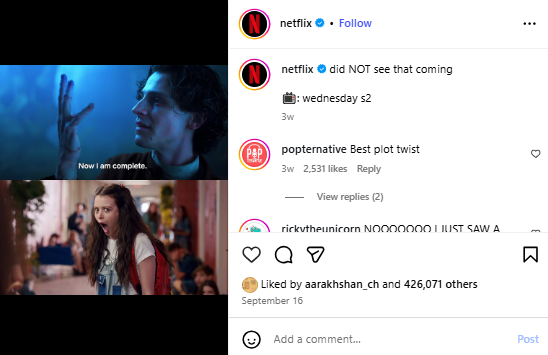
You should also design your campaign assets like building blocks. Make short clips and alternate headlines that can be updated without starting from scratch. If possible, create visual variations that can be mixed for different platforms and cultural moments.
Modern consumers want to be a part of the brand’s creative side, and the success of Burger King’s campaign we’ve mentioned above proves this. Brands that ace creative strategy invite their communities to shape creative ideas.
For example, many brands co-create content with their audiences. That’s what user-generated content (UGC) is. Brands use this content in their campaigns to make their audiences feel represented. Since 65% of customers in the US use UGC to make purchase decisions, this is a good step towards increasing conversions.
Similarly, brands like Glossier get feedback from customers through their Instagram stories. They use this input to devise creative messaging around new releases.
You can also involve your audience in creative decisions by building interactive elements into your campaigns. Some examples include creative submissions, user-generated video challenges, and polls. Give people a voice in how your story unfolds. When they help build it, they’ll proudly share it.
Your creative strategy isn’t broken; it’s just waiting for an update. The brands getting it right today listen to their audiences, blend insight with instinct, and build messages that move people.
If your ideas feel stalled, start small. Reconnect creativity with data. Rebuild the link between storytelling and sales. Let AI handle personalization so your team can focus on imagination. When needed, bring in experts who can turn your strategy into something people see and enjoy.
At INDIRAP, we turn creative direction into scroll-stopping visuals that fuel awareness, sales, and social buzz. Since everything is done-for-you, you can focus on running the business while your content builds demand.
Book a free, no-obligation Discovery Call today to discuss your creative strategy in detail.